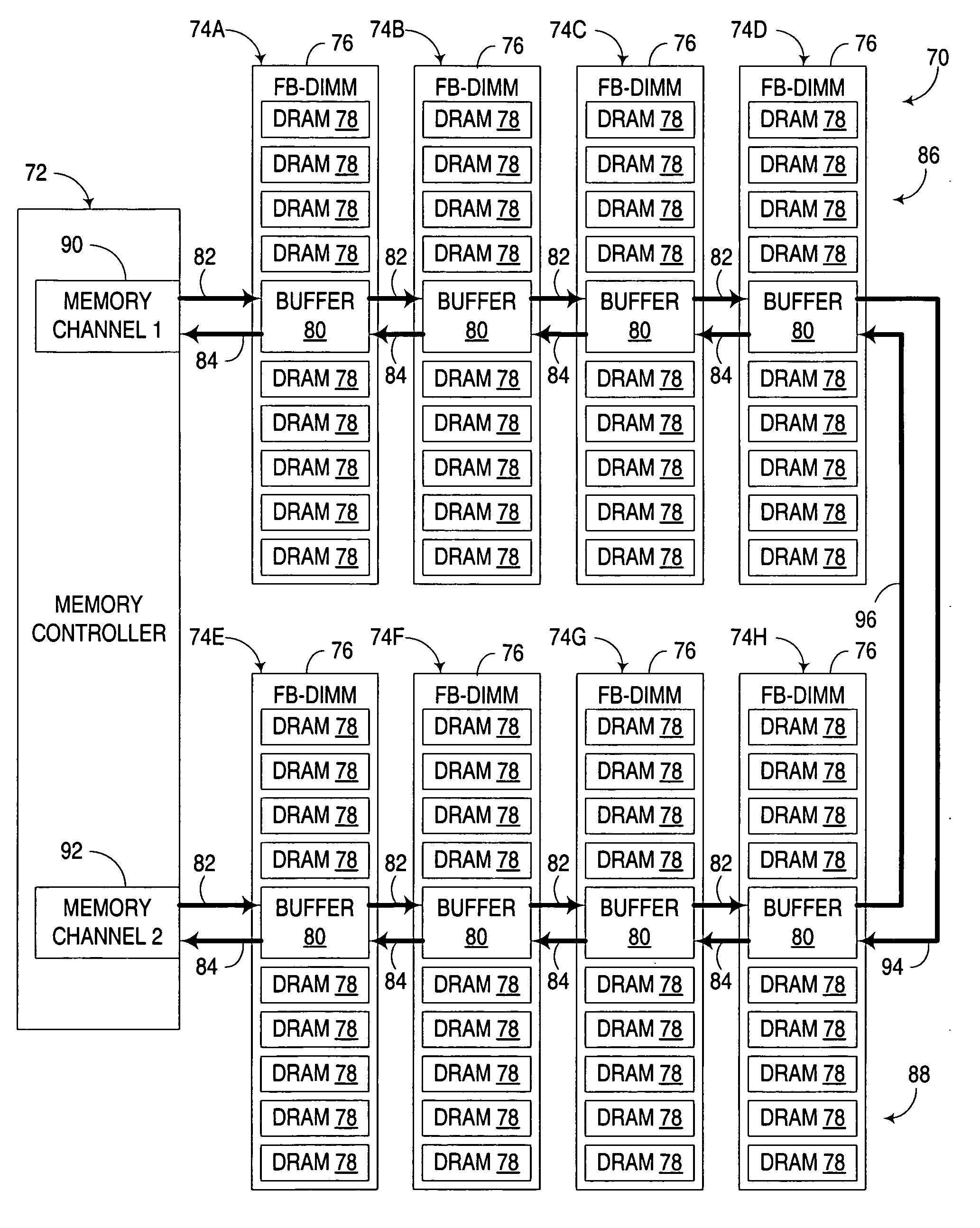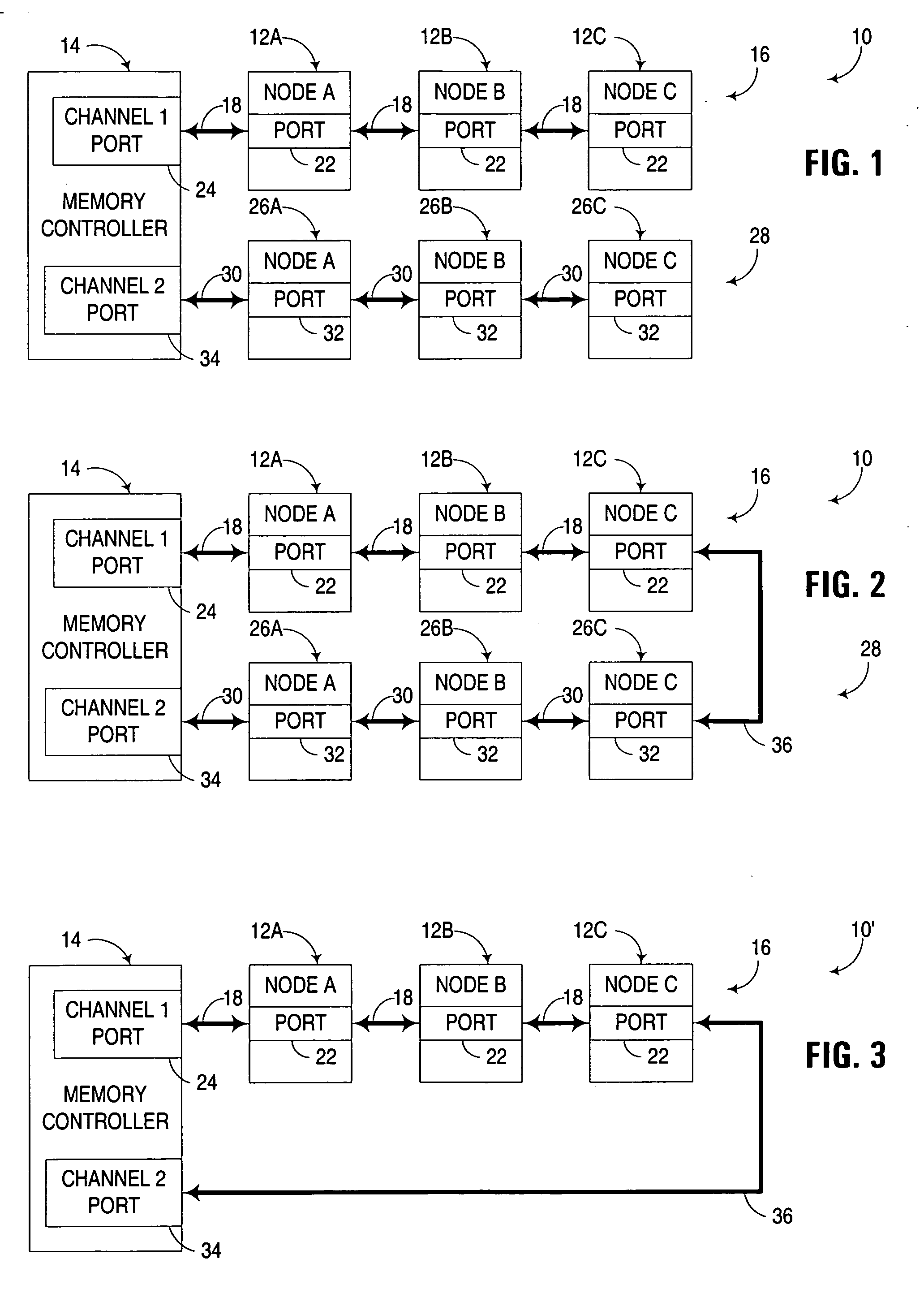Multi-channel memory architecture for daisy chained arrangements of nodes with bridging between memory channels
a memory channel and multi-channel technology, applied in frequency-division multiplex, data switching networks, instruments, etc., can solve the problems of limiting factors on affecting the performance of the overall memory system, and affecting the overall performance of the architecture. achieve the effect of optimizing bandwidth utilization and latencies, and improving overall memory system performan
- Summary
- Abstract
- Description
- Claims
- Application Information
AI Technical Summary
Benefits of technology
Problems solved by technology
Method used
Image
Examples
Embodiment Construction
[0029] The embodiments discussed and illustrated hereinafter utilize bridging between multiple memory channels in a multi-channel memory architecture or system to enable data traffic associated with nodes disposed in a daisy chain configuration coupled to a particular memory channel to be communicated over multiple memory channels. In the context of the invention, data is associated with a particular node when that data either is output by, or directed to, that node. Moreover, such data may include various types of information, including for example, write data, read data, command data, address information, status information, configuration information or practically any other type of information that may be input to or output by a node.
[0030] Also in the context of the invention, a daisy chain configuration is a point-to-point configuration whereby multiple nodes are chained together via point-to-point interconnects between adjacent nodes (i.e., nodes that are immediately next to ...
PUM
 Login to View More
Login to View More Abstract
Description
Claims
Application Information
 Login to View More
Login to View More - R&D
- Intellectual Property
- Life Sciences
- Materials
- Tech Scout
- Unparalleled Data Quality
- Higher Quality Content
- 60% Fewer Hallucinations
Browse by: Latest US Patents, China's latest patents, Technical Efficacy Thesaurus, Application Domain, Technology Topic, Popular Technical Reports.
© 2025 PatSnap. All rights reserved.Legal|Privacy policy|Modern Slavery Act Transparency Statement|Sitemap|About US| Contact US: help@patsnap.com



